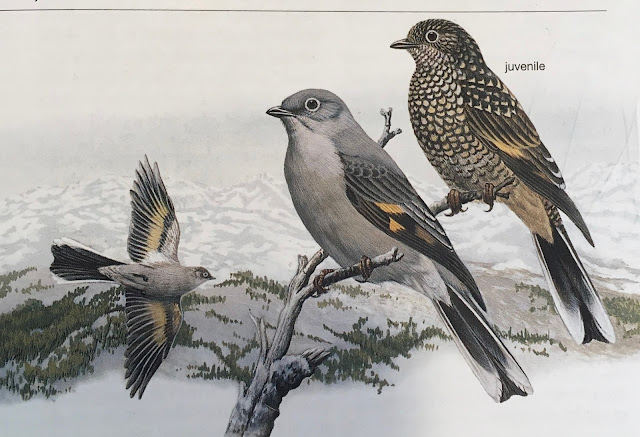Rare Western Thrush Visits NB
 |
| Townsend's Solitaire |
The Townsend's Solitaire is dark gray above and light gray below. It has a small dark bill, distinctive white eyering and splashes of beige on its wings. It has white outer tail feathers and shows a buffy-orange colour under its wings in flight. It is 21.5 cm long (8.5"). In the photo above note the eyering. This bird is just beginning to show a bit of beige on the wings. It is probably a juvenile just getting its adult plumage.
 |
| Townsend's Solitaire [National Geographic Complete Birds of North America, p. 483] |
 |
| Townsend's Solitaire |
According to Birds of New Brunswick An Annotated List there have been about 15 records of visits of this species to NB. They come in fall and winter and often do not come to feeders. Clearly their arrival is a result of disturbed migration patterns.
Thrushes are noted for their songs. This species sings a very long warbling sound much like a purple finch or certain warblers. There is no common species here that one would mistake this species for. However, it could be mistaken for a Northern Mockingbird which shows up here in small numbers every year now. The mockingbird is larger and does not have the white eyering, has two white wing-bars and a longer bill.
Winter is an unique time for those interested in birds. The cold weather and scarcity of food tend to bring birds to feeders. That makes it easier to notice a rare visitor. We have had many this year in New Brunswick.
No comments:
Post a Comment